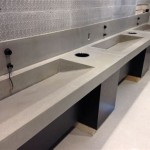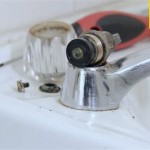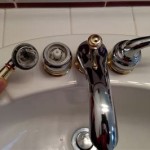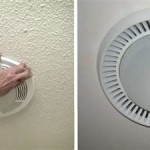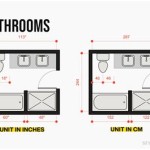How Much Does it Cost to Install a Bathroom Exhaust Fan?
The cost of installing a bathroom exhaust fan can vary significantly depending on several factors. Homeowners often prioritize proper ventilation in bathrooms to mitigate moisture build-up, prevent mold growth, and eliminate unpleasant odors. Understanding the components that contribute to the final cost is crucial for budgeting effectively and ensuring a quality installation.
The price range for bathroom exhaust fan installation typically falls between $150 and $550, but this is a broad estimate. The actual cost can fluctuate based on the type of fan, the complexity of the installation, the presence of existing wiring, and geographic location. This article will delve into the various elements influencing the total expense, providing a comprehensive overview for homeowners considering this essential home improvement.
Factors Influencing the Cost of Bathroom Exhaust Fan Installation
Several key factors contribute to the overall cost of installing a bathroom exhaust fan. These include the type of fan, the complexity of the installation process, the need for electrical work, and regional price differences.
Type of Fan: The type of exhaust fan selected directly impacts the price. Basic, builder-grade fans are the least expensive, often priced between $20 and $50. These fans typically offer minimal features and may be noisier than higher-end models. Mid-range fans, costing between $50 and $150, often include features like quieter operation, humidity sensors, and integrated lights. High-end fans, priced above $150, may incorporate advanced features such as Bluetooth speakers, heated air, and sophisticated humidity controls. Selecting a fan with specialized features will inevitably increase the initial purchase price.
Consider also the power of the fan, measured in cubic feet per minute (CFM). A larger bathroom requires a fan with a higher CFM rating for effective ventilation. Fans with higher CFM ratings generally cost more due to their increased motor capacity and larger size.
Complexity of Installation: The complexity of the installation is a significant determinant of labor costs. A straightforward replacement of an existing fan is the least expensive scenario. In this case, the electrician or handyman simply removes the old fan and installs the new one, utilizing the existing wiring and ductwork. However, if there is no existing fan, the installation becomes more complex and costly.
Installing a new fan often requires cutting a hole in the ceiling, running new electrical wiring from a nearby circuit, and installing ductwork to vent the air outside. If the bathroom is located on an interior wall, the ductwork may need to run a longer distance to reach an exterior wall or the roof. This additional work increases the time required for the installation, thereby increasing the labor costs.
Electrical Work: The need for electrical work is a crucial cost factor. If there is no existing electrical wiring in the bathroom to power the fan, a licensed electrician will need to run a new circuit from the electrical panel. This involves connecting the new circuit to a breaker in the panel and running the wiring through the walls and ceiling to the fan's location. This electrical work can add a significant amount to the total cost, depending on the distance from the electrical panel and the complexity of running the wiring.
Furthermore, local electrical codes may require the installation of a Ground Fault Circuit Interrupter (GFCI) outlet for the fan. A GFCI outlet provides additional protection against electrical shocks in wet environments. The cost of the GFCI outlet and its installation will also contribute to the overall expense.
Geographic Location: Labor costs can vary significantly depending on the geographic location. Areas with a higher cost of living typically have higher labor rates for electricians and handymen. Urban areas tend to have higher rates than rural areas. Obtaining multiple quotes from different contractors in the area is crucial to get a realistic estimate of the prevailing labor costs.
Additionally, local building codes and permitting requirements can also influence the cost. Some municipalities may require a permit for bathroom exhaust fan installation, which can add to the overall expense. Understanding local regulations and factoring in permit fees is essential for accurate budgeting.
Breakdown of Costs: Materials and Labor
To understand the total cost of bathroom exhaust fan installation, it is helpful to break down the expenses into materials and labor. Materials include the fan itself, ductwork, wiring, and any necessary hardware. Labor encompasses the cost of hiring an electrician or handyman to perform the installation.
Materials Costs: As previously mentioned, the cost of the exhaust fan can range from $20 to over $150, depending on the features and quality. Ductwork typically costs between $10 and $30, depending on the length and type of duct. Flexible ductwork is generally less expensive than rigid metal ductwork, but rigid ductwork is more durable and efficient. Wiring costs can vary depending on the length of wire needed and whether a new circuit is required. Other materials, such as screws, electrical connectors, and sealant, typically add an additional $10 to $20 to the total material costs.
Labor Costs: Labor costs are the most variable component of the total expense. A simple replacement of an existing fan may only take one to two hours, with labor costs ranging from $75 to $200. However, a new installation, requiring electrical work and ductwork installation, can take four to eight hours, with labor costs ranging from $300 to $600 or more. Electricians typically charge higher hourly rates than handymen, so it is important to consider the scope of the work and whether a licensed electrician is required.
It's also crucial to factor in potential additional costs. For instance, if asbestos is discovered during the removal of an old fan or ductwork, abatement services will be necessary, which can significantly increase the project's overall cost. Similarly, unforeseen structural issues discovered during installation might require additional repairs, adding to the labor time and material expenses.
Cost-Saving Strategies for Bathroom Exhaust Fan Installation
While installing a bathroom exhaust fan is a necessary investment for home health and maintenance, there are several strategies to potentially reduce the overall cost. Careful planning, comparing quotes, and considering DIY options (when appropriate) can help manage expenses.
Obtain Multiple Quotes: Obtaining quotes from at least three different contractors is a crucial step in ensuring a fair price. Different contractors may have varying labor rates and approaches to the installation. Comparing quotes allows homeowners to identify the most competitive pricing and ensure that they are receiving a reasonable estimate.
Reviewing the details of each quote carefully is paramount. Make sure the quotes include a breakdown of material and labor costs, and that they clearly outline the scope of work. Also, inquire about any potential hidden fees or additional charges that may arise during the installation process.
Consider a Simpler Fan Model: Opting for a basic fan model without advanced features can significantly reduce the initial purchase price. If features like Bluetooth speakers or heated air are not essential, a standard fan with adequate CFM and quiet operation may be sufficient. Simpler models are also often easier to install, which can potentially reduce labor costs.
However, it is important to balance cost savings with functionality. Selecting a fan with an appropriate CFM rating for the bathroom size is crucial for effective ventilation. Also, consider investing in a fan with a low sone rating for quieter operation, especially if the bathroom is located near bedrooms or living areas.
DIY Installation (with Caution): For homeowners with experience in electrical work and home improvement, a DIY installation can be a cost-effective option. However, it is crucial to proceed with caution and ensure that all electrical work is performed safely and in accordance with local codes. Improper electrical work can be dangerous and may void warranties or violate building codes.
If the installation involves running new electrical wiring or modifying existing circuits, it is strongly recommended to hire a licensed electrician. Even if the homeowner is comfortable with basic electrical tasks, complex wiring projects should be left to professionals. A professional electrician can ensure that the wiring is installed safely and correctly, minimizing the risk of electrical hazards.
Furthermore, be aware of the implications for home insurance. DIY projects that are improperly executed can lead to insurance claims being denied in the event of damage. Weighing the potential risks and benefits carefully before undertaking a DIY installation is crucial.

Average Cost To Install A Bathroom Fan Forbes Home

How Much Does It Cost To Install Bathroom Ventilation And Fans Badeloft

Venting A Bath Fan In Cold Climate Fine Homebuilding

2024 Cost To Install Bathroom Exhaust Fan Replace Vent

Bathroom Extractor Fan Installation Cost Guide How Much Is It

2024 Cost To Install Bathroom Fan Angi

Quick Tip 23 Fixing A Drip At The Bathroom Fan Misterfix It Com

Bathroom Exhaust Fans The Complete Guide By Fanco

Install A New Bathroom Vent Fan Light

How To Choose The Right Bathroom Exhaust Fan Make It
Related Posts
